The Noctua NH-P1 Passive CPU Cooler Review: Silent Giant
by E. Fylladitakis on February 7, 2022 8:00 AM EST- Posted in
- Cases/Cooling/PSUs
- Passive Cooling
- Noctua
- CPU cooler
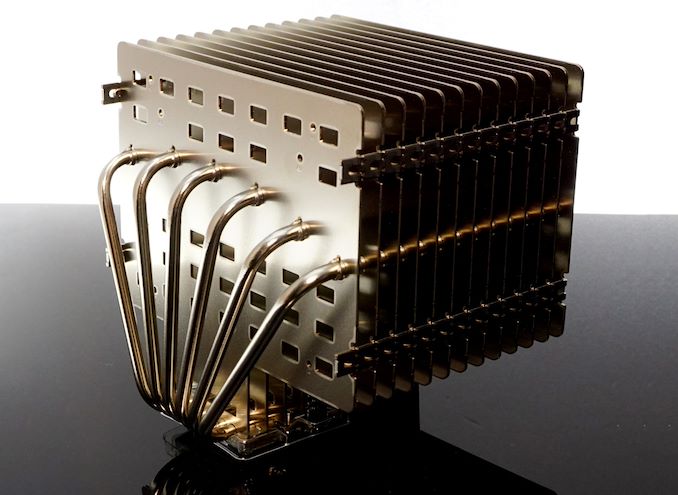
Even before the first Pentium era of the early 1990s, PC CPUs were already powerful enough to require meaningful and capable cooling setups to keep their temperatures in check. Although there were configurations that could make it by with passive cooling, most PCs were already relying on active cooling solutions. Not many years later, active cooling not only became a de facto requirement, but the high thermal loads generated by processors required that heatsinks have powerful and noisy fans. The pushback from this increasingly noisy era of computing, in turn, effectively spurred the modern market for high-end passive coolers for use in low-noise (but still high-performance) PCs.
The history of passive coolers for high-performance PCs is not very rich – the physics of heatsinks is a well understood field – but, occasionally, we would see some companies make a valiant effort to produce a passive cooler that would be viable on the open market. There were even instances where manufacturers tried to make the entire PC passively cooled, as Zalman’s effort 20 years ago with the hefty TTN-500AF case. Nevertheless, no solution was long-lived, mainly because the ever-rising power (and cooling) requirements would quickly overwhelm the capabilities of the passive coolers of the time.
But now in 2022, perhaps the world is ready for a change? To answer that question, in today’s review we are having a look at the NH-P1, a surprising passive CPU cooler released by one of the most reputable active PC cooler manufacturers, Noctua.
Having already established their name (and then some) with low-noise active coolers, Noctua has turned their attention to the final frontier of low-noise cooling: passive CPU coolers. And in order to accomplish this, Noctua has built a pure heatsink. A very, very large pure heatsink that's suitable for CPUs.
Throughout all of their history, Noctua has never made a purely passive cooler before, which makes the NH-P1 a remarkable product from the company. The company has significant experience with cooling with their traditional actively cooled products, but suffice it to say, moving a lot of heat without the help of forced airflow is a much bigger challenge – and one we're eager to see a company like Noctua undertake. So is the NH-P1's sheer size alone capable of withstanding the intense thermal loads of modern processors? Let's find out.
| Noctua NH-P1 CPU Cooler Specifications | |||
| Height | 158 mm | ||
| Width | 154 mm | ||
| Depth | 152 mm | ||
| Weight | 1180 g | ||
| Supported Sockets | Intel: LGA1700, LGA1200, LGA1156, LGA1155, LGA1151, LGA1150, LGA2066, LGA2011-0 & LGA2011-3 (Square ILM) AMD: AM4, AM2, AM2+, AM3, AM3+, FM1, FM2, FM2+ (backplate required) |
||
| Warranty | 6 Years | ||
| Price | $110 | ||
Packaging & Bundle
The NH-P1 comes into a well-designed cardboard box, following the same simple artwork that Noctua is using for nearly all of their products. It is an elegant design, focused on delivering as much information as possible rather than relying on striking colors to catch the eye. The sheer size of the packaging hints that the NH-P1 is nothing alike any air cooler we have seen before. Inside the box, we found the cooler very well protected below layers upon layers of thick cardboard packaging. The supplied mounting hardware and extra items can be found in a smaller, compartmentalized cardboard box.
Aside from the typical mounting hardware necessary to mount the NH-P1 onto a CPU socket, Noctua also supplies a nice screwdriver, a tube of NT-H2 thermal grease, and a metallic case badge. And, while perhaps sacrilegious for what's meant to be a fully passive cooler, there are also two wire holders for installing a fan, should the user ever wish to do that.
The Noctua NH-P1 CPU Cooler
A simple glimpse on the Noctua NH-P1 is enough for anyone to realize that this is no run-of-the-mill CPU cooler. To begin with, the sheer proportions of the NH-P1 are massive beyond comparison. At 15.8cm x 15.4cm x 15.2cm (essentially a 6.5-inch cube), the NH-P1 dwarfs typical tower coolers – which are already pretty large – taking about three times the volume of a fully-assembled NH-U12S. And its 1.18kg weight makes it heavier than some laptop computers.
Considering both the size and the nature of the NH-P1, it is bound to face compatibility issues with both systems and cases, as well as limited compatibility with CPUs. To that end, Noctua provides detailed compatibility tables that include both system parts and PC cases, to help buyers get a better idea ahead of time over where the plus-sized passive cooler can fit.
Case compatibility aside, the NH-P1 supports nearly all modern CPU sockets, including Intel's LGA-11xx/1200 socket and latest LGA-1700 socket, as well as AMD’s socket AM4. Threadripper is left out in the cold, however, as it would not be possible for the NH-P1 to handle the extreme thermal requirements such a high-end processor.
Despite its massive proportions, the NH-P1 sports only thirteen fins. The fin spacing is nearly ten times that of a typical air cooler, and every single fin is perforated with 33 rectangular holes so as to optimize passive airflow. This configuration would make typical cooler fins too thin and flimsy, so Noctua greatly increased the thickness of each fin as well. Finally, the fins also are not pressed onto the heatpipes but soldered, ensuring the long-term mechanical strength of the cooler.
Six heatpipes are responsible for transferring the bulk of the thermal energy generated by the CPU onto the fins of the cooler. The heatpipes start from the base of the cooler, positioned exactly in parallel to each other, and extend to just one side of the base towards the top half of the fins in a symmetric fan pattern. They are made out of copper but are fully nickel-plated to prevent surface corrosion.
The base of the NH-P1 is almost typical for any modern heatpipe-based cooler, with the exception that six of the fins extend and are directly attached to the base itself. This is mostly to increase the mechanical strength of the NH-P1, as the colossal fin array could not be reliably supported by the heatpipes alone. Yet it may also be playing a little part in the thermal performance of the cooler as well by allowing a little bit of thermal energy to transfer directly from the base towards the fins.
The bottom half of the base is made out of nickel-plated copper, maximizing the heat transfer rate from the CPU to the heatpipes. It is extremely well machined, perfectly flat, and smooth. The rest of the base serves only as a mechanical support and is mostly made out of aluminum, with the exception of the mounting bracket that is nickel-plated steel.


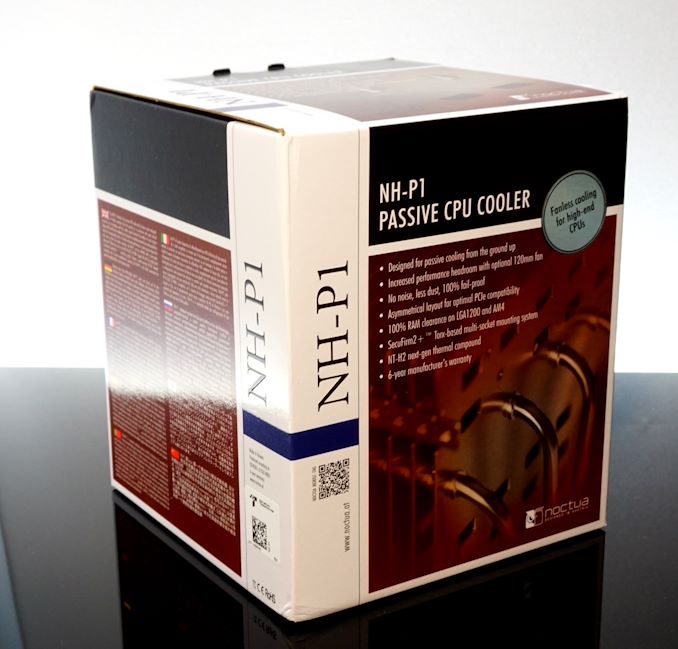
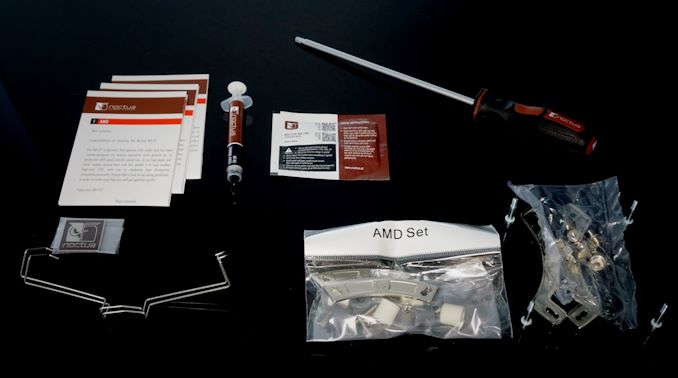
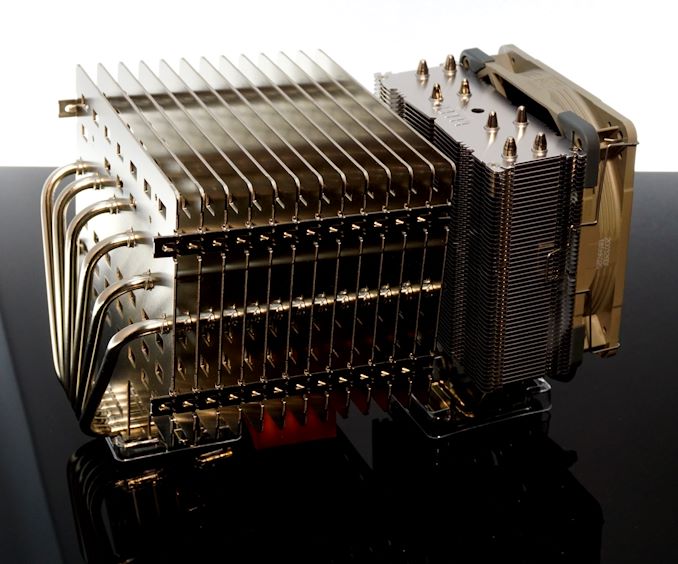
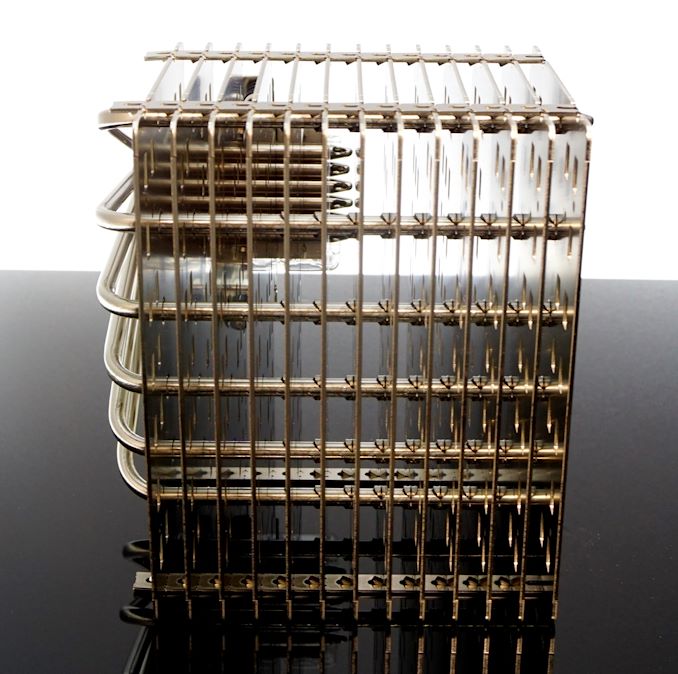
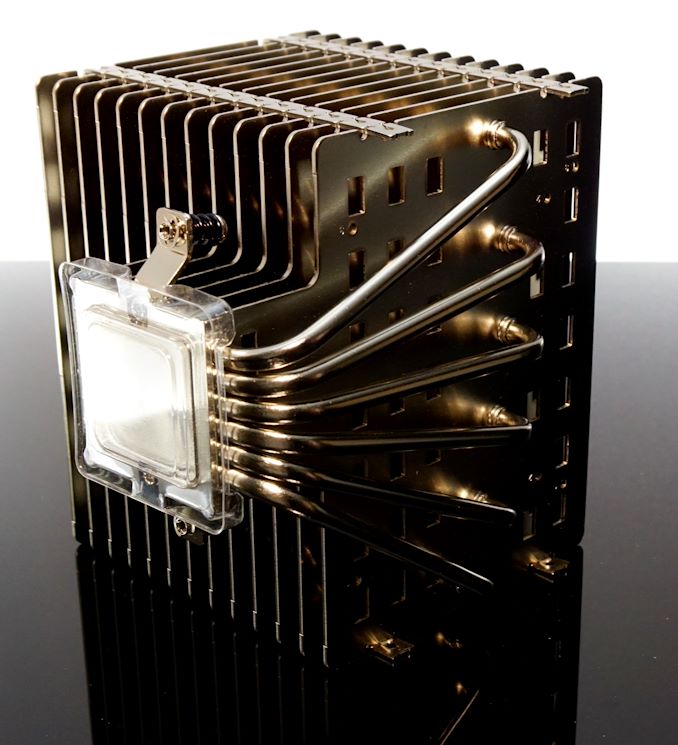
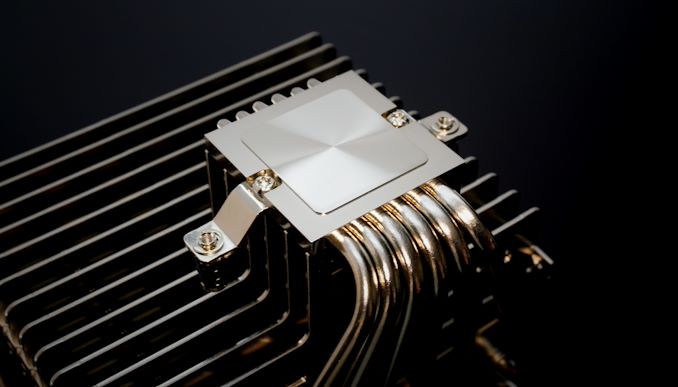








66 Comments
View All Comments
back2future - Wednesday, February 9, 2022 - link
might be a ~5-7yrs repeating task for 24/7 systems (and low rpm 120/140mm fans)?Since fans acoustics found being proportional to around 5th power of rpms, it might fit for some having 240/360mm fans for low rpm :) and airflow is what is needed for heat transfer: Having natural convection around an optimized passively cooled system might get to around 100W heat dissipation an given sizes for case and mainboard clearances and if there's no fan, a passive setup has to create its own 'air flow' speeds. Heat radiation is probably low percentage (with having shiny surfaces?) within device cases anyway? Some utilize ionic wind effects, etc.
TheinsanegamerN - Thursday, February 10, 2022 - link
Try 5-7 months. 5-7 years is a 1 way ticket to a system with a coating so heavy you can draw in it.back2future - Wednesday, February 9, 2022 - link
inspired for searching dust filter for fans, learned that items are available (with intake air flow reduction/resistance mostly not quantified, what might get a future review and compared to passive cooling systems?)shelbystripes - Wednesday, February 9, 2022 - link
Because a single fan to circulate air through the entire case is optimal for cooling everything inside the case. A heat sink with fan will move heat off the CPU … and around inside the case … still maintaining high ambient temperature inside the case, unless you have a second fan to move air through the case.Reducing to a single case can also allow use of a single LARGE case fan (something like 200mm, even) that runs at a low speed, and produces background noise that is less distracting. Smaller fans produce higher pitched buzzing sounds, and have to spin at high speeds to move substantial air; the inverse is also true.
jmke - Monday, February 7, 2022 - link
> Finally, we should note that we are testing the NH-P1 in its purely passive form, without any forced airflow at or even near it.while you did test the product in an isolated way, giving you excellent values. They are are however not relevant to real world usage. If you install this cooler in your case, near a <500rpm exhaust fan, your system will still be silent and the performance of this cooler will be much better than what your results show here.
imho an unfair evaluation of a product that's not tested as it will be used.
like testing 2 cars on a dragstrip, then saying that the Minivan is slower than the Porsche; never mind the fact that real world testing would have had 5 passengers.
at_clucks - Monday, February 7, 2022 - link
"near a <500rpm exhaust fan"A review for a passive cooler better focus on the worst case scenario: a passive build. Let's not assume someone paying premium for a high end passive cooler will mount other fans in there or place this under the AC.
You now have the baseline performance and you know putting a 500RPM exhaust fan will improve performance. You'll never worry that the performance is better than expected, you worry when it's worse.
WaltC - Thursday, February 10, 2022 - link
I have to agree here. Often a central element to a cooler review is how easy/hard is it to install, and of course how well it works (or doesn't work) when actually installed in a case. I feel like this would have been a royal pain in the derrière to install and test, of course, so I can sympathize with the author on that point. However, that raises the question of why try and review something you will not actually install and test in the environment which said product was designed for? That might be better than beginning a product review with a litany of the things you can't/won't be able to do...;) There are several low-power CPUs that might have been tested, imo, and that might function fine with this passive cooler. AT seems sometimes to shirk testing key elements of reviewed products--an advanced motherboard, for instance, with lots of hardware features was reviewed here. It was the kind of product a n00b would never buy because of its cost and complexity of features. Everything was fine until the review author said he wasn't going to look at the bios controls because, paraphrased, "hardly anyone messes with his bios these days." For that particular motherboard, nothing could be further from the fact of the matter...;) The people who would buy it have every intention of making adjustments according to their preferences in the bios. I would only suggest that AT editorial guidance be more insistence on completeness and thoroughness in the product reviews it publishes. Guesswork and estimations are all fine, but they are no substitute for real testing, imo.Dantte - Monday, February 7, 2022 - link
That beast is beautiful and is going to look great in my submerge build!Stuka87 - Monday, February 7, 2022 - link
I feel like the testing on this was a bit short sighted on the actual use case of this cooler. These testing done is still use full. But a good secondary test would be to have it in a situation where case air is going through it. Many cases use a front-to-back airflow setup. Are the fins oriented in a way to allow the air to go through the heat sink? And if so, how much better does it work?ington - Monday, February 7, 2022 - link
I'm a complete noob in cooling but the price of bunch of aluminium plates (however well they are machined) and copper rods seems steep... 1,5 times of raspberry pi 4b 8gb (an actual pc) as steep